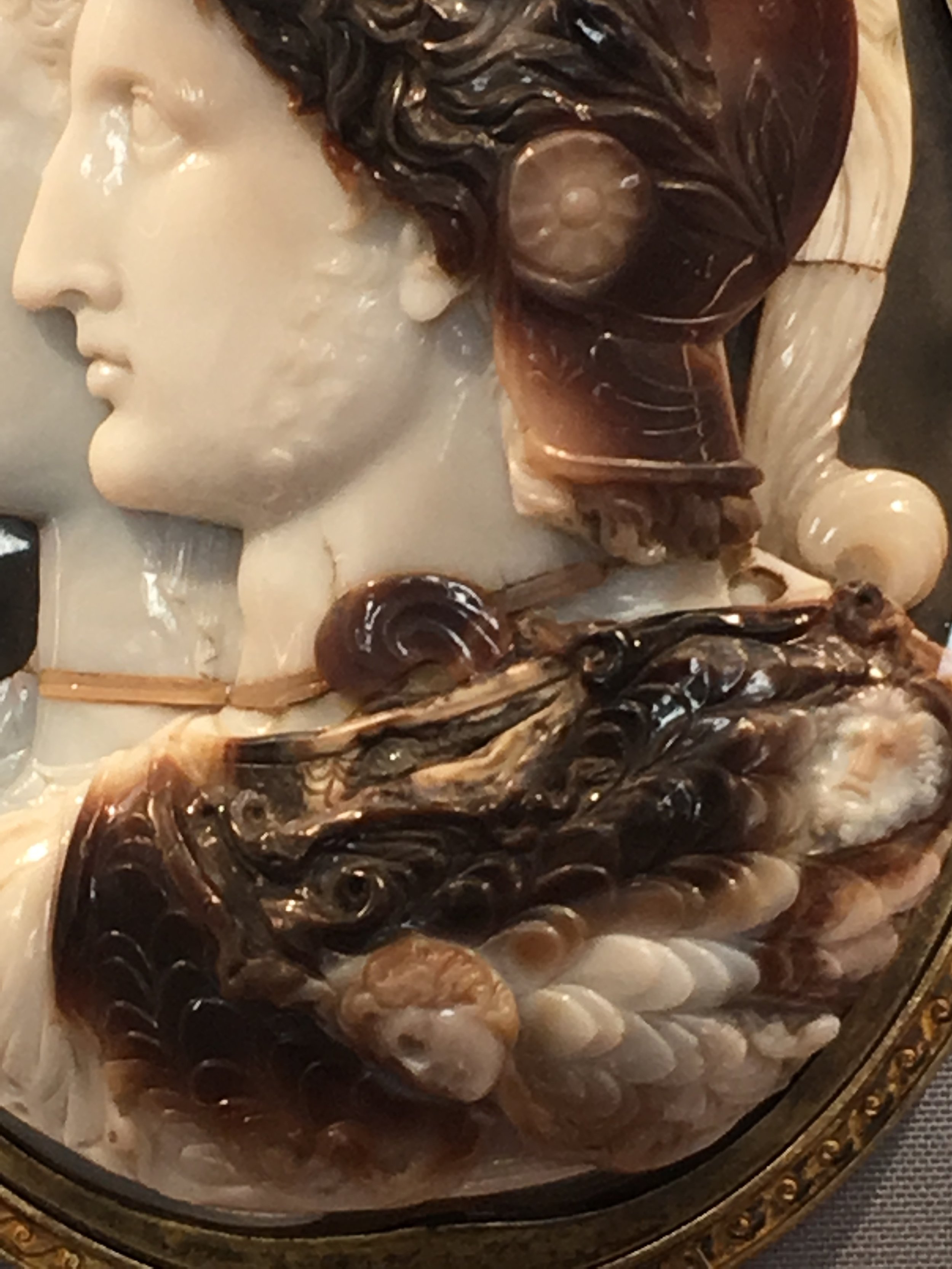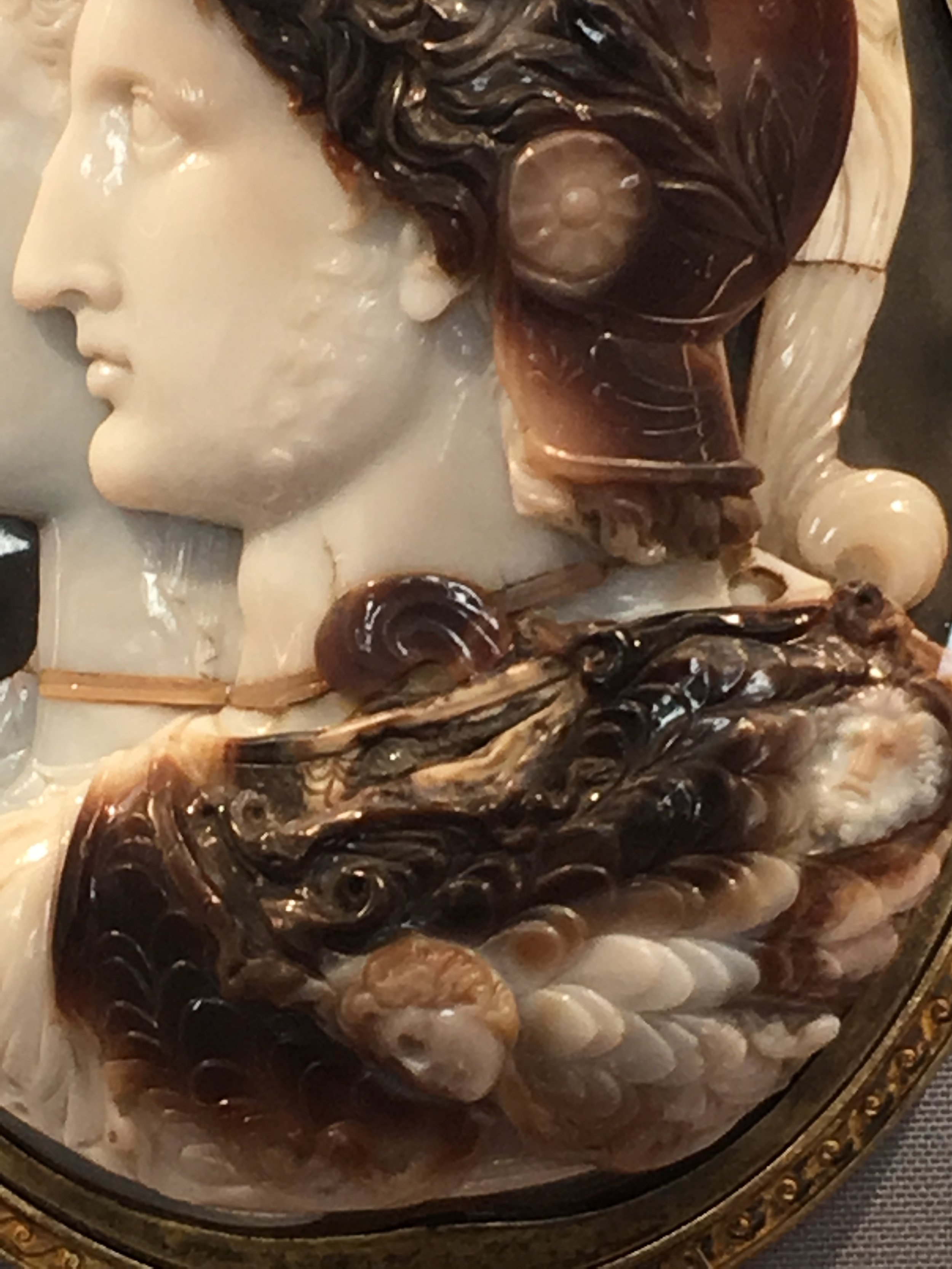The Gonzaga Cameo
The Gonzaga Cameo. The State Hermitage Museum
It came to Catherine the Great’s grandson, Czar Alexander I to add one of the most coveted pieces of Classical Antiquities to the immense collection of cameos already assembled by his grandmother. The Gonzaga Cameo was carved out of sardonyx during the 3rd century in Egypt. Sardonyx was normally sourced from India and after arriving in Alexandria, it took several years of work to create this piece. Its first recorded existence was in 1542 as being part of the collection of Isabella d’Este. It subsequently went through the collections of the Dukes of Mantua, the Holy Roman Emperor’s troops carried to Vienna to be deposited in the treasury of the Prague Castle. The Swedes troops having marched into Prague, they proceeded to take it to Sweden.
The Cameo made its way back to Italy, by being part of the treasury that Queen Christina of Sweden carried to Rome upon her abdication to the Swedish Throne and conversion to Catholicism. Queen Christina most probably left it to Cardinal Decio Azzolini, and eventually, it was purchased by the Odescalchi family. It became part of the collection of Pope Pius VI as one of the last great buys of his Papacy. The Pope who died as a prisoner of Napoleon, the Gonzaga Cameo, and over one hundred masterworks were handled to France. Napoleon presented it to Josephine, who in turn gifted it to Czar Alexander I to demonstrate her gratitude for the Emperor’s protection. It is through this last owner that the Cameo made its way to the Hermitage.
“It was an Alexandrian master of the 3rd century BC who carved this work on a large piece of sardonyx, playing on all the stone's inherently painterly qualities. In this paired portrait of Ptolemy II Philadelphus with his wife and sister Arsinoё II, deified rulers of Egypt, the engraver, like the poet Theocritus, likened the subjects to the "rulers of Mount Olympus", the brother and sister Zeus and Hera who concluded a "holy marriage". The manly and passionate face of the ruler contrasts with Arsinoё's calm, classically correct profile. The two faces are carved in the middle, lighter layer of agate, from beneath which we can see the third, greyish layer shining through and forming a background, which creates an effect as if Arsinoe's face were in the shade. The hair, helmet and, shield (aegis) of Ptolemy/Zeus are set in the upper, brown layer of stone, it’s light incrustations used to pick out the rosette on the helmet and also the heads of Medusa and Phobos (personification of Fear) on the shield. Large cameos of agate - a material harder than steel - took several years to produce and were thus extremely expensive. The Gonzaga Cameo is a marvelous example of the luxury of Ptolemy's court. It must have served as an object of adoration and a symbol of the cult of these new ruler-gods.”
Title: Cameo: Portraits of Ptolemy II and Arsinoe II (The Gonzaga Cameo)
Place of creation: Egypt, Alexandria
Date: 3rd century BC (setting - later work)
Material: sardonyx, silver, copper
Dimensions: 15,7x11,8 cm
Acquisition date: Entered the Hermitage in 1814; originally in the collection of Alexander I
Sources:
- The Hermitage Museum - Cameo: Portraits of Ptolemy II and Arsinoe II (The Gonzaga Cameo)
- The Empress of Art. Catherine the Great and the Transformation of Russian. Susan Jaques.
- Scarisbrick, Diana. Life at Malmaison, Apollo, 5th November 2007.








